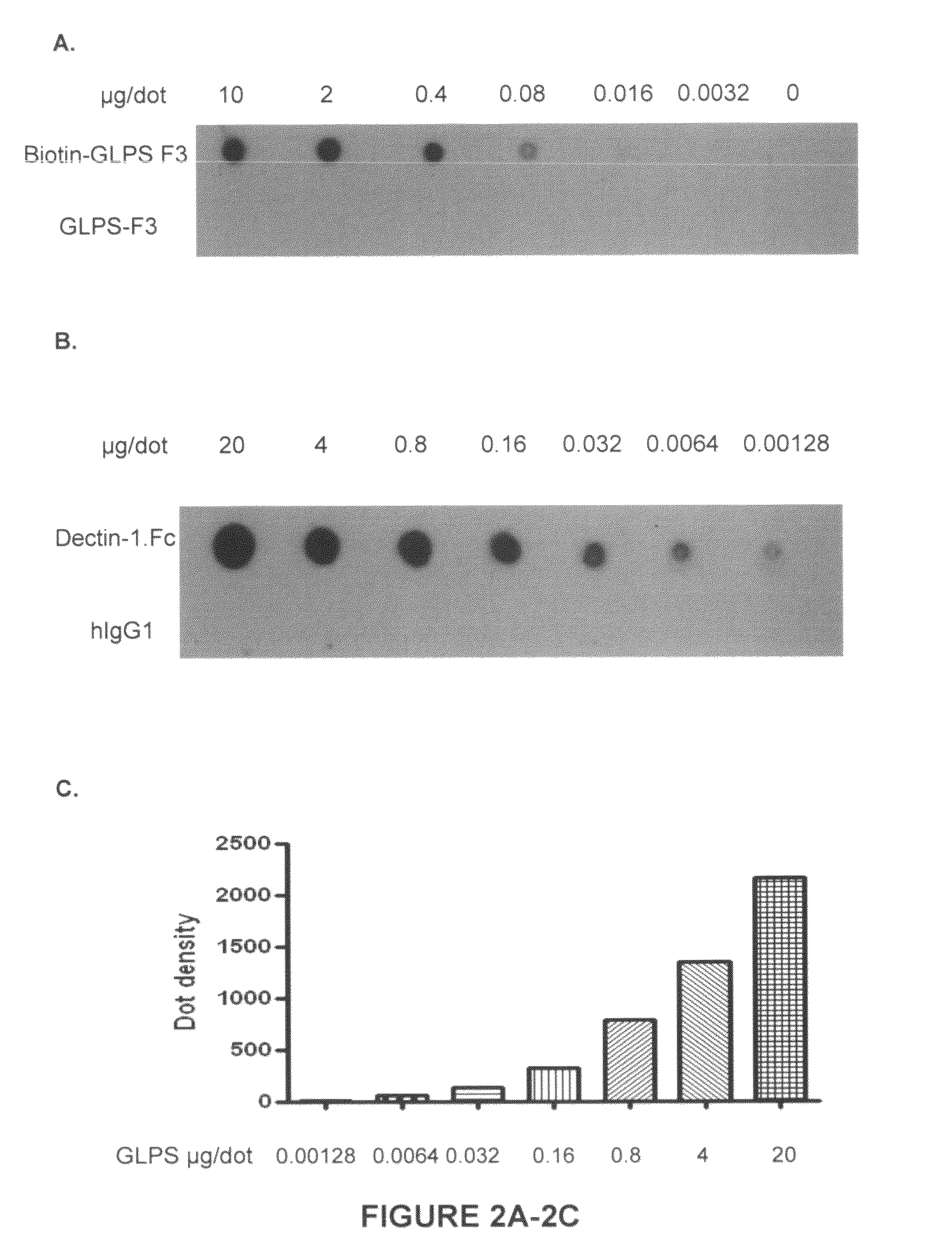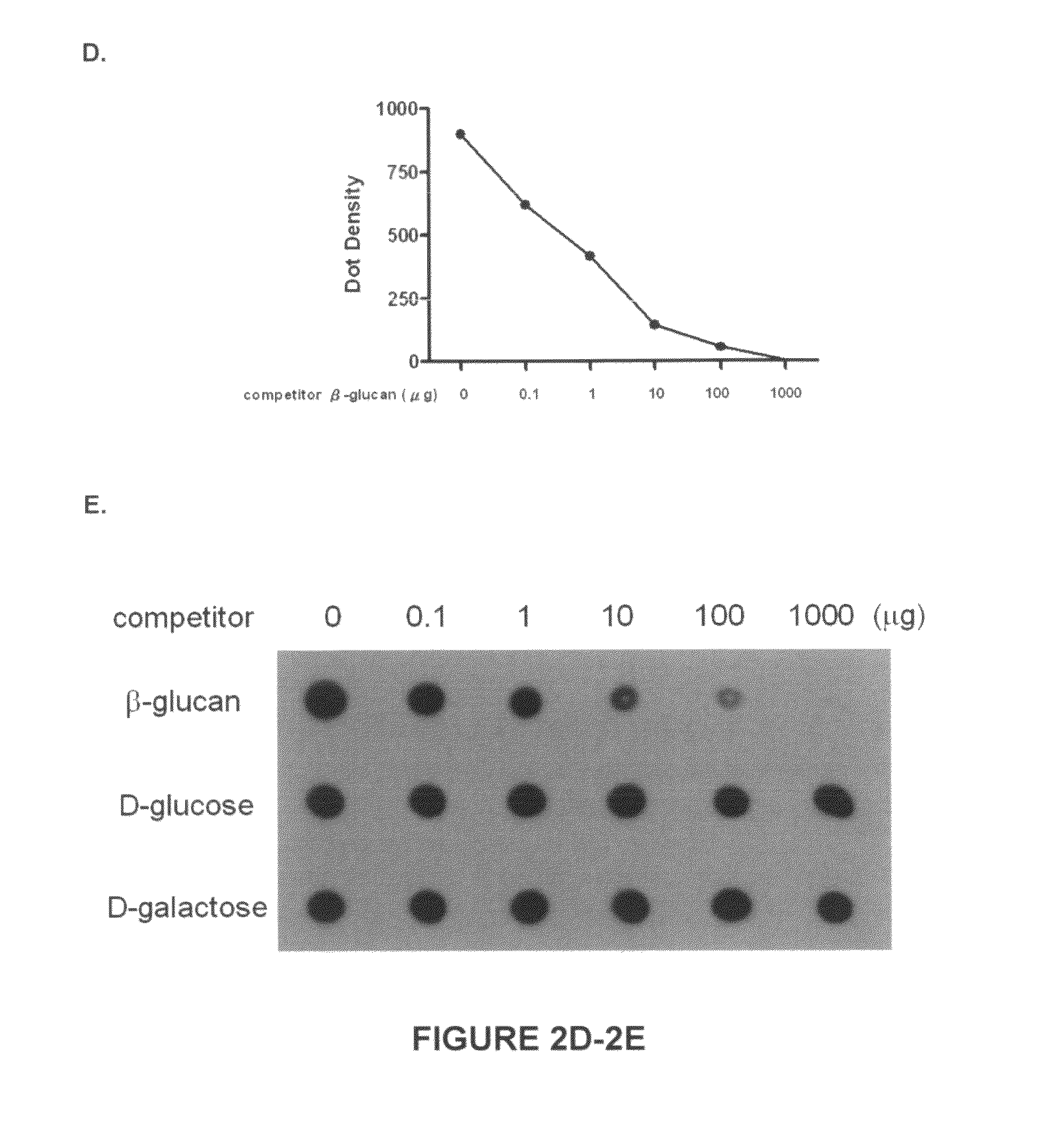Compositions and methods for identifying response targets and treating flavivirus infection responses
- Summary
- Abstract
- Description
- Claims
- Application Information
AI Technical Summary
Benefits of technology
Problems solved by technology
Method used
Image
Examples
example 1
Preparation of Innate Immunity Receptor:Fc Fusion Protein
Cell Culture
[0132]293F cells (Invitrogen; R790-07) were cultured in serum-free 293 FREESTYLE 203 expression medium (Invitrogen, 12338-018) in a 125 mL flask on an orbital shaker (125 rpm) at 37° C. in a CO2 incubator.
Construction of Receptor.Fc Fusion Genes
[0133]The extracellular domains of lectin receptors, TREMs and TLTs were cloned by the reverse-transcriptase polymerase chain reaction (RT-PCR), followed by subcloning into a yT&A vector and then into a pcDNA3.1(+)hIgG1.Fc expression vector. The resulting receptor.Fc construct encodes recombinant proteins that are fused with a mutated human IgG1 Fc portion, which does not bind to human Fc receptors. The mutations in the IgG1 Fc portion are L234A, L235E, G237A, and P331S. The sequences of the primers used to RT-PCR amplify the extracellular domains are (alternatively primers can be selected from the sequences listed in Table 2):
[0134]
CLEC1A / CLEC-1sense primer5′-GAATCCTTTCAGTA...
example 2
Preparation of Polysaccharide Extracts
Crude Extracts of Reishi
[0136]Crude Reishi extract (prepared via alkaline extraction, neutralization and ethanol precipitation) was obtained from Pharmanex Co. (CA, USA). Spectrapor® dialysis membrane tubing with molecular weight cut off (MWCO) 6000-8000 dalton, Thermo bio-basic SEC-1000 columns, Tosoh TSK G5000PW×1 SEC columns, and all chemicals and reagents were from Sigma, or Aldrich Co., unless indicated.
Purification of Reishi. Extract
[0137]Crude Reishi powder (6 g) (obtained from Pharmanex Co.) was dissolved in 120 mL of ddH2O, stirred at boiling water (100° C.) for 2 h, and centrifuged (1000 rpm) for 1 h to remove insoluble material. The resulting solution was concentrated at between about 40° C. and about 50° C. to give a small volume, and then lyophilized to generate 5 g (83%) powder of dark-brown color (G. lucidum polysaccharides; GLPS). This water soluble residue was stored at −20° C. until further purification.
Standardization-Isolati...
example 3
Western Blot Analysis of Purified Receptor:Fc Fusion Proteins
[0145]The purified receptor.Fc fusion proteins of Example 1 were subjected to electrophoresis, transferred onto nitrocellulose membrane (Hybond-C extra, Amersham Pharmacia Biotech) and reacted with (1:3000) peroxidase-conjugated goat anti-human IgG Ab (Jackson, Pa., USA) in TBST (5% non-fat dry milk in Tris-buffered saline with 0.02% Tween 20) buffer. After washing with TBST, blots were then incubated with enhanced chemiluminescence reagents (Amersham Pharmacia Biotech) for visualization.
PUM
 Login to View More
Login to View More Abstract
Description
Claims
Application Information
 Login to View More
Login to View More - R&D
- Intellectual Property
- Life Sciences
- Materials
- Tech Scout
- Unparalleled Data Quality
- Higher Quality Content
- 60% Fewer Hallucinations
Browse by: Latest US Patents, China's latest patents, Technical Efficacy Thesaurus, Application Domain, Technology Topic, Popular Technical Reports.
© 2025 PatSnap. All rights reserved.Legal|Privacy policy|Modern Slavery Act Transparency Statement|Sitemap|About US| Contact US: help@patsnap.com



